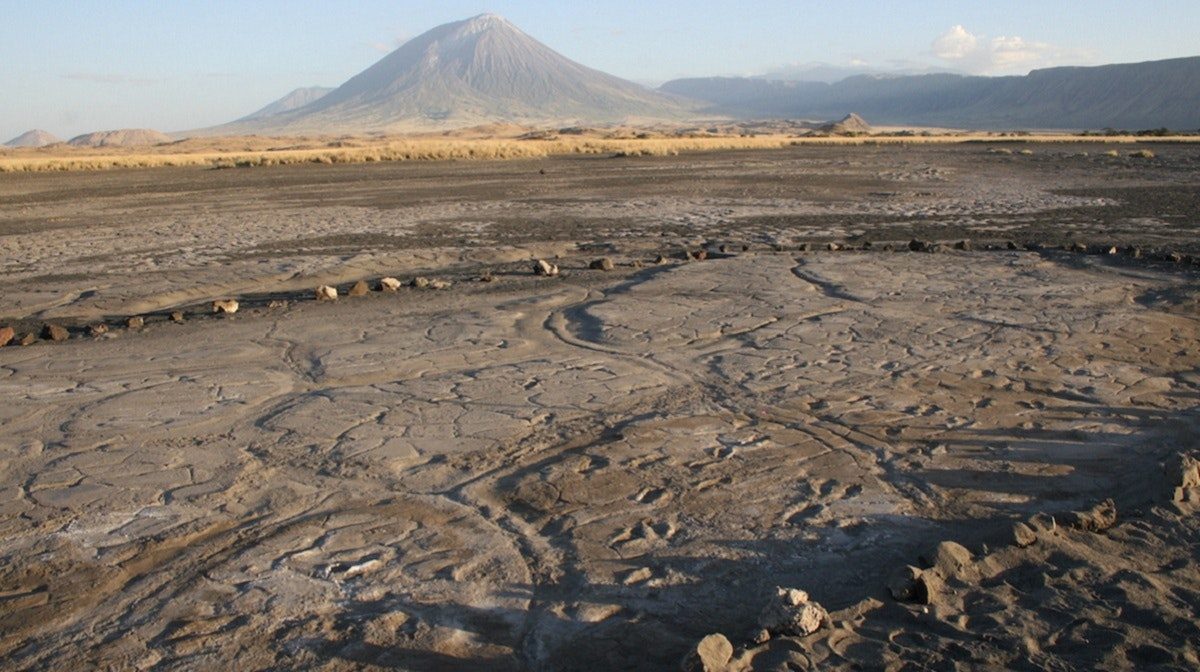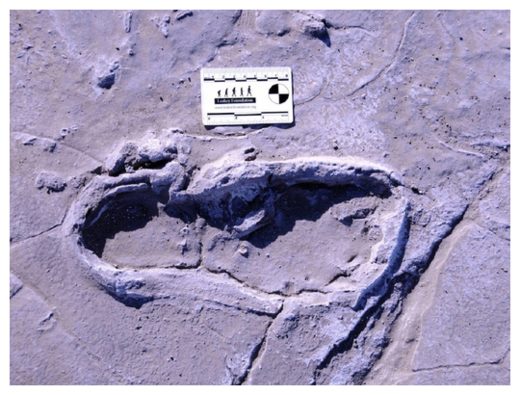
More than 400 indents were left by bare human feet in Engare Sero, Tanzania, originally spotted by members of a local Maasai community more than a decade ago and their age and formation described in 2016.
Geological analyses revealed the prints, all preserved on the same surface of hardened ash from nearby volcano Ol Doinyo Lengai, were made sometime between 6000 and 19,000 years ago, placing them around the Late Pleistocene.
Now, paleoanthropological analyses, published in the journal Scientific Reports, explore what the fossilised tracks reveal about the people who made them.
"Footprints are rare components of the human fossil record," says lead author Kevin Hatala from Chatham University in Pittsburgh, US, "yet they can preserve exceptional snapshots of behaviour in our distant past."
The size, spacings and orientations of one group of tracks suggest they were made by 17 people walking together in a south-westerly direction, including at least 14 adult females accompanied by two adult males and possibly a teenager.
This sort of group structure was rare, but is consistent with those observed during sexually divided cooperative foraging activities in modern hunter-gatherers such as the Ache and Hadza.
The findings could therefore reflect a sex-based division of foraging behaviour in ancient human communities.
"It is not surprising to see evidence of this behaviour at this point in time," says Hatala, "but it is fascinating to see a direct snapshot from the fossil record that is consistent with that type of scenario."
Another six tracks of footprints show people moving towards the north east at varying speeds, two at faster walking speeds and one of them running, suggesting they were unlikely to have been travelling together.
The fact that no tracks deviated from these opposite directions could be due to physical landscape restrictions.
Other hominin footprints found in lake margin environments indicate their owners moved along the lakes' shores to forage, supported by bovid prints at perpendicular angles reflecting animals going to the water to drink.
At Engare Sero, a lack of bovid tracks makes it hard to confirm a similar pattern, and although zebra and buffalo footprints about 30 metres away were perpendicular to the humans', the researchers report lack of evidence to draw any clear conclusions.
However, Hatala is eager for new analytical methods to evolve.
"We hope that this motivates continued studies that can unlock the potential for fossil footprints to inform us of past behaviours."




Reader Comments
to our Newsletter